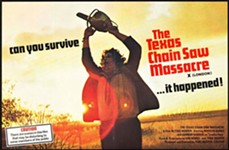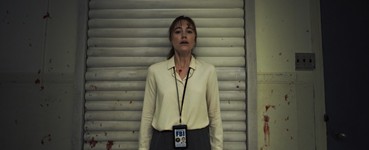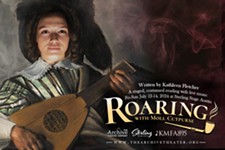Now Streaming in Austin: Coming Undone With Minnow Mountain
Resurrecting Rotoscoping for the Amazon Prime mindbender
By Richard Whittaker, 11:28PM, Wed. Nov. 20, 2019
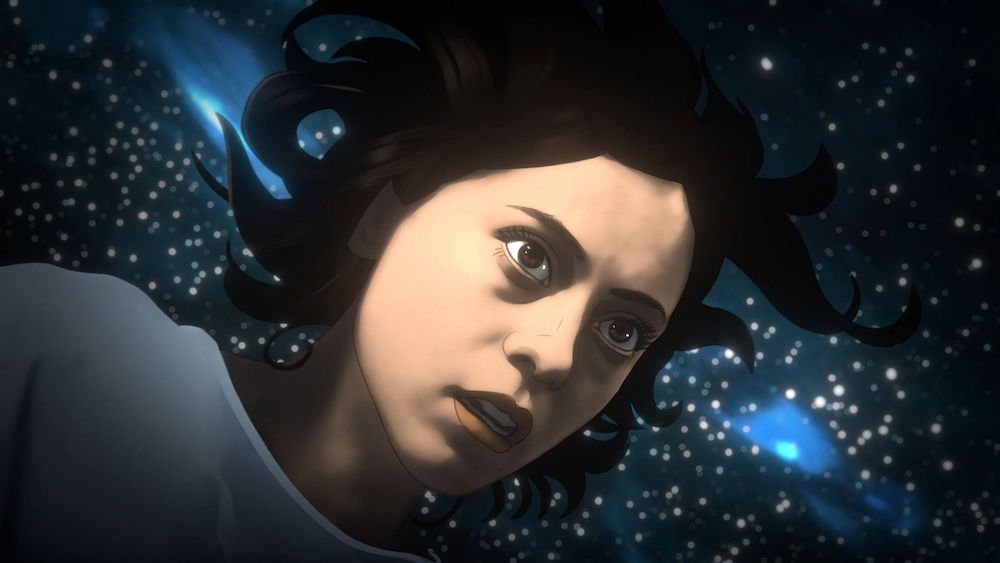
Rotoscoping is dead, they said. Creating animation by drawing over live-action footage is too complex, too costly, too demanding in time and paper and effort to be worth the time. Austin animation studio Minnow Mountain keeps proving “them” wrong by resurrecting the 100-year-old art form for the digital age.
This time it’s through the mind-warping experience of Amazon Prime's Undone. Written by BoJack Horseman creator Raphael Bob-Waksberg and BoJack scripter Kate Purdy, it's the story of a young woman (Alita: Battle Angel star Rosa Salazar) who finds the world redrawing itself around her after a car crash unlocks unknown family secrets and her own bizarre abilities.
Anyone who saw the Austin animation house’s work on the Emmy-winning Tower will instantly recognize Minnow Mountain’s signature hand-drawn digital style on Undone. However, even though they worked collaboratively with Amsterdam-based animation studio Submarine and series director Hisko Hulsing, Undone was a huge endeavor in the history of rotoscoping, as the Texas artists handled the character animation for all eight 22-minute episodes. Studio co-founder Craig Staggs explained, “No one has handled this much volume as we did on Undone in the amount of time that we had."
Of course, the modern Rotoscoping revival became synonymous with Austin after Richard Linklater’s two forays into the form, 2001’s Waking Life and 2006’s A Scanner Darkly. It’s almost a running joke that every Austin artist has an IMDB credit on one or the other – and that includes Staggs himself. In fact, he said, “Eight of our 20 artists were Scanner people It’s a small town and – up till now – there was not a lot of animation done.”
Now Austin is undoubtedly an animation town, with multiple studios. The biggest remains Rooster Teeth (gen:LOCK, RWBY), but Powerhouse Animation (Castlevania, Seis Manos, and the upcoming Masters of the Universe revamp) is growing fast, while Mighty Coconut (Kings of Atlantis) is working on its first feature, Koalaroo. Like both Mighty Coconut and Powerhouse, Minnow Mountain started as an animation service company, doing contract work on shows, films, commercials and training videos. However, while that’s a key part of the business, Staggs said he also wants to expand Minnow Mountain into creating their own shows. “Their model is something we’re interested in, of taking that service thing and pushing it to originals.”
Austin Chronicle: So where did the name Minnow Mountain come from?
Craig Staggs: I’ve always told myself I would come up with some great back story for the name, because we don’t have one. We iterated it. There was a list of just thousands of names that we ran through. Totally overthinking it.
My first job at 15 was drawing caricatures at Astroworld in Houston, which was the big amusement park there. I came here in ‘95 because it’s cooler than Houston. With Slacker, Waking Life, there were more interesting things going on in Austin – unless you were into punk rock, because there was a great punk rock scene in Houston at the time.
So I drew cartoons and I did theatre a lot when I came to Austin. I was with a theatre called Shirk Workers Union, and we did underground theatre in bars and the like. I was working at a Catholic publisher in the art department, drawing saints for bulletins on Sundays, and saw an audition notice for A Scanner Darkly. I went in and auditioned, and it happened to be very similar to my style, so I was lucky enough to be in the right place at the right time, so that was my first real animation job. And after that, it just clicked. I had the interest in art, and I had the interest in theatre and film.
So after Scanner Darkly, I formed a small company called Aphid Animation, where we made a bunch of short format stuff. (Minnow Mountain cofounder Steph Swope) and I in 2012 formed Minnow Mountain as a way to look for larger, riskier projects, and see if we could handle them.
AC: When did you know that you were providing a style and a service that clients would find attractive?
CS: It hasn't been that long. Steph and I did a bunch of videos on our own, making sketches and trying to both build our network and put together our work flow. So you really do work at iterations: Job after job, you get closer and closer.
AC: So what was the first big project?
CS: It was obviously Tower. We were self-producing a web show for a tiny budget when Keith Maitland, the director of Tower, approached us. It was such a no-brainer as far as an animation studio in Austin – of course we were going to do it. I would gladly have gone broke doling it, and we kind of did. It was very low budget, and we didn't make a lot of profit as a company. But it went from one night playing on Independent Lens on PBS, to getting picked up by Kino Lorber, winning everything it could at SXSW, getting shortlisted for an Academy award. The amount of attention that it got, and the critical acceptance of it, was through the roof. So it really did make us, at least in the very small world of Rotoscoping, a household name. And that lead directly to Undone.
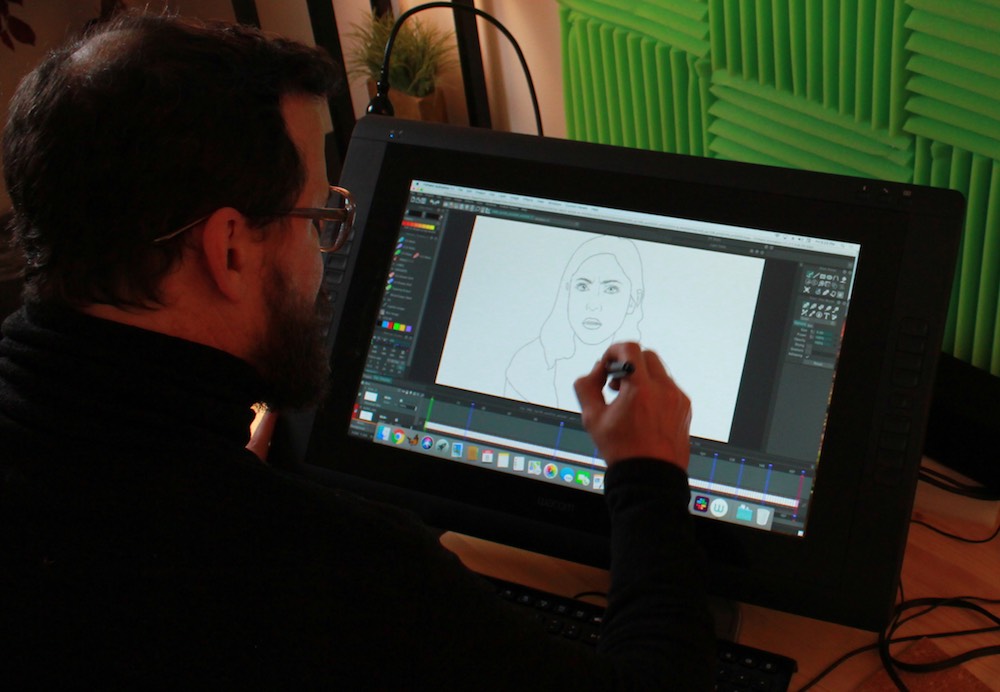
AC: There’s undoubtedly a house style to Minnow Mountain that’s instantly recognizable.
CS: For Aphid, we were cartooning – like a Schoolhouse Rock style. For Minnow Mountain, we really did seek to find a way to make Rotoscoping fast enough for film and television production. So we knew we had an obstacle to overcome in figuring out how we could make this 100 year-old technology functional leveraging a digital workflow.
AC: And Rotoscoping is almost as old as cel animation itself. Even when they’re not actually Rotoscoping, animators often use live reference footage. You look at a lot of early Disney, and they were using footage of real actors for guidance.
CS: You do get a little into the minutia of terms. Performance capture is a broader term that covers Rotoscoping, but also includes video reference, and than can be anything from a Rotoscoped naturalistic character to cartoons that act and behave like the actors acted and behaved. A lot of those Disney things, you’ll see that. It’s not technically Rotoscoping, because they’re not tracing frame-by-frame, but they are side-by-side, using the actors’ performance to draw the cartoons. So we use performance capture to describe all of that, and Rotoscoping is the technical process of drawing over, frame-by-frame.
AC: And Rotoscoping is particularly interesting, because while you’re working close to the reference footage, there’s a point when the art kicks in, of what you do and don’t include, what are the reference points, how do you elaborate on that. You’re using the material movement of the footage, but then you have to extrapolate, and build in everything that’s not in the footage.
CS: What animators do is represent, in a basic sense, weight and movement through lines or color or shape. At a higher function, it's emotion – using that movement and weight, the illusion of life, to tell a story that has an emotional impact.
What we try to do with our approach is to make that emotional performance part of the actor's process. So rather than it being a technical process of "This actor is moving from here to here," it's a performative process contributing to and acting within that pipeline. So they're very much collaborating with the actor, with the cinematographer, and then with the color and composite artists afterwards. So it's not a representation of what you see in the video: each frame represents a lot of choices that the animator is making to pull back, or what they show. We also may do things like adjust the age of a character, and sometimes we're given notes on the emotional state of that character. "Less emotional." "More emotional." So the animator can bring a lot to that performance, and we're really trying to get to the heart of the thing.
Undone is on Amazon Prime now.
A note to readers: Bold and uncensored, The Austin Chronicle has been Austin’s independent news source for over 40 years, expressing the community’s political and environmental concerns and supporting its active cultural scene. Now more than ever, we need your support to continue supplying Austin with independent, free press. If real news is important to you, please consider making a donation of $5, $10 or whatever you can afford, to help keep our journalism on stands.
Richard Whittaker, March 28, 2020
Richard Whittaker, March 23, 2020
July 12, 2024
Now Streaming in Austin, Undone, Minnow Mountain, Craig Staggs, Rosa Salazar, BoJack Horseman, Hisko Hulsing, Raphael Bob-Waksberg, Kate Purdy, A Scanner Darkly, Rooster Teeth, Mighty Coconut, Powerhouse Animation






